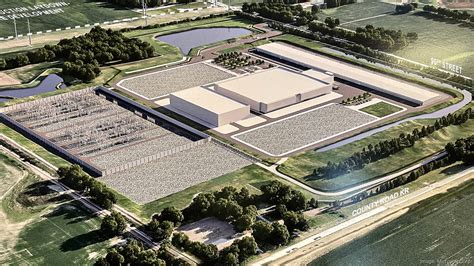Have you ever wondered if tech giants like Microsoft have a crystal ball hidden somewhere in their headquarters? Well, recent reports suggest that maybe they do—or at least, they’re taking a cautious stance amidst global uncertainties.
It all started with Bloomberg dropping the bombshell that Microsoft is hitting the brakes on several data center projects across the world. This isn’t just one isolated incident; it marks the third time whispers of Microsoft’s scaled-back approach to its data center endeavors have surfaced. But why?
According to insiders, there are growing concerns about an imminent glut in global data center capacity. As major economies brace for impact following President Donald Trump’s tariff escalations, tech firms like Microsoft are facing additional hurdles. The company’s latest moves hint at a shift towards a more conservative investment strategy in its AI infrastructure projects.
Microsoft’s $80 Billion Bet
Despite these cautionary signals, Microsoft remains steadfast in its commitment to allocate approximately $80 billion toward data centers during this fiscal year. But beyond that point lies uncertainty; growth projections indicate a slowdown post this massive investment blitz.
The focus now pivots towards optimizing existing infrastructure by incorporating cutting-edge servers and AI technologies. The era of grand construction plans may be waning as Microsoft gears up to enhance its current facilities with state-of-the-art equipment.
Pulling Back Across Continents
Bloomberg’s expose sheds light on Microsoft’s strategic retreat from various data center ventures globally. From stepping away from potential leases near Cambridge to halting parts of campus development outside Jakarta, it seems like red flags are popping up across different geographies.
In North Dakota, prolonged negotiations led to lost exclusivity with a prospective tenant, while expansion efforts in Wisconsin hit roadblocks despite significant prior investments. These anecdotes reflect a broader narrative of recalibration within Microsoft’s infrastructure roadmap.
The OpenAI Interlude
Amidst these transitions, Microsoft made headlines by nixing plans for additional data center leases worth $12 billion from CoreWeave. However, OpenAI swooped in as the white knight to fill this void—albeit using funds likely sourced from Microsoft itself due to their funding ties.
Speculation swirls around whether diminishing AI workloads are contributing to this cautionary stance within tech behemoths. Reports suggest that advancements akin to China-based DeepSeek’s efficiency gains might be challenging preconceived notions about compute-intensive AI operations.
The Chinese Conundrum
On another front, MIT Technology Review painted a picture of surplus capacity plaguing China’s rush towards establishing over 500 new data centers—of which nearly 80% reportedly remain idle today. While China spearheaded ambitious construction drives aimed at fortifying its AI prowess, the reality paints a starkly different tale of underutilized resources.
These narratives collectively underscore an overarching theme: big tech’s ambitions could be outpacing present demand dynamics in the AI landscape. Investors and industry insiders are beginning to exercise prudence amidst signs of potential oversaturation within the data center arena.
As we navigate through these intriguing developments shaping the future of digital infrastructures and artificial intelligence landscapes globally, one thing is certain—Microsoft and its peers stand at crossroads where strategic foresight meets operational realities.









Leave feedback about this